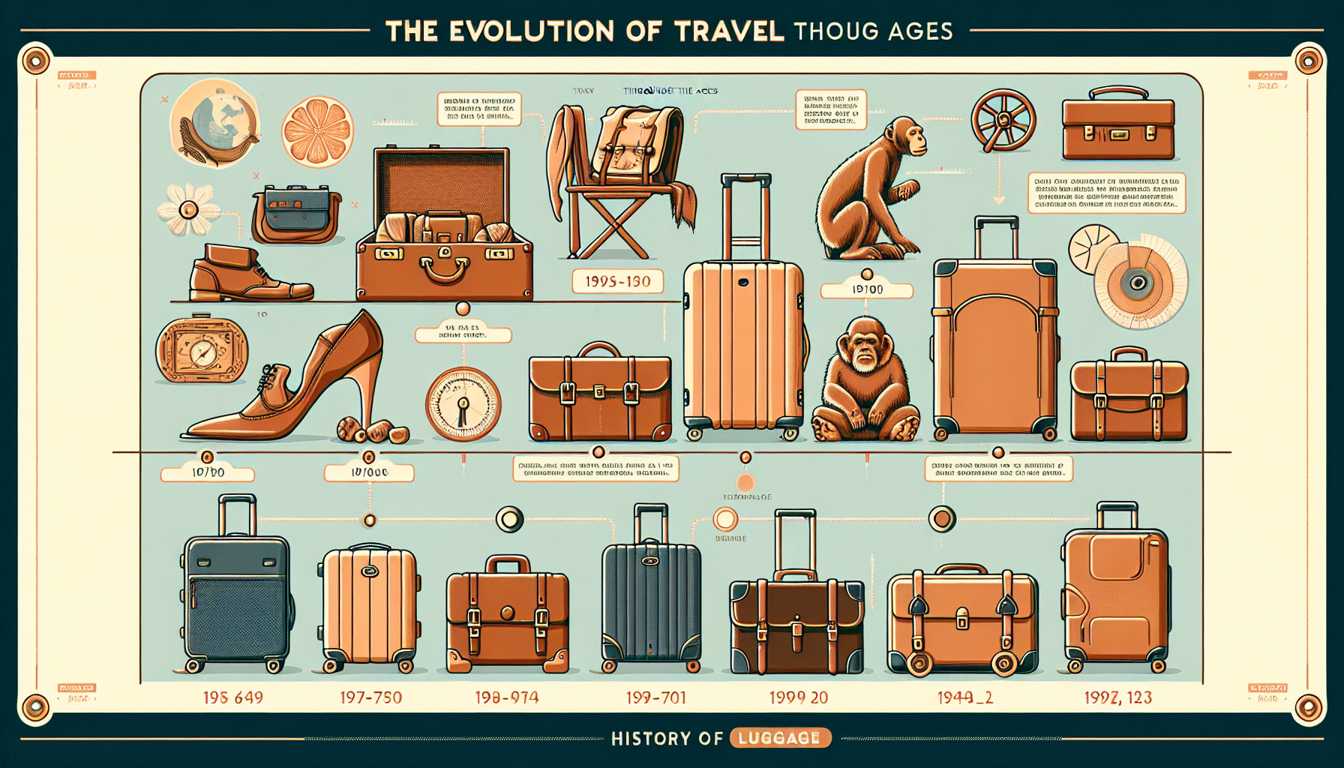
The Evolution of Travel: A History of Luggage Through the Ages
Travel has been a fundamental aspect of human civilization, evolving from the necessity of ancient trade routes to the luxury of modern tourism. Parallel to this evolution, the development of luggage has been equally dynamic, adapting to the changing needs and technologies of different eras. This article offers a comprehensive exploration of the history of luggage, highlighting key developments and innovations.
Ancient Beginnings
Primitive Packs and Vessels
In the earliest days of human civilization, mobility was crucial for survival. Nomadic tribes used basic packs made from animal skins or woven natural fibers. These were the precursors to modern backpacks, designed for functionality over form.
The Egyptian and Roman Influence
In ancient Egypt and Rome, travel was more structured, often for trade, military, or administrative purposes. The Egyptians utilized sturdy baskets and bags made from papyrus or palm leaves, while the Romans developed the 'loculus', a leather bag, for their soldiers, indicating the first steps towards more durable and specialized luggage.
Medieval and Renaissance Periods
The Advent of Chests and Trunks
The Middle Ages saw a significant shift in luggage design with the introduction of wooden chests and trunks. These were often elaborately decorated, reflecting the wealth and status of the owner. They were also heavily fortified with metal, making them secure but cumbersome.
The Influence of Trade and Exploration
As trade routes expanded and exploration increased during the Renaissance, so did the need for more practical luggage. Merchants and explorers required robust containers to protect their goods and belongings during long voyages. This period also saw the introduction of leather trunks reinforced with metal bands, providing a balance between durability and portability.
The Age of Exploration
Nautical Advances
The Age of Exploration was a turning point in luggage history. Sea voyages necessitated waterproof and sturdy containers. Sailors used sea chests made from wood and waterproofed with pitch, while the affluent had custom-made trunks, often covered in hides or fine fabrics for added protection and aesthetics.
Material and Design Innovations
This era also witnessed innovations in materials and design. The use of iron and brass for locks and reinforcements became common, and the shapes of trunks evolved to be more stackable and space-efficient on ships.
The 19th Century: The Golden Age of Travel
The Impact of the Industrial Revolution
The Industrial Revolution brought about significant changes in travel and, by extension, luggage. The development of the steam engine led to the proliferation of rail and steamship travel, making long-distance travel more accessible and necessitating more practical luggage solutions.
The Emergence of Modern Suitcases
It was in this era that the modern suitcase began to take shape. Lightweight and rectangular, these suitcases were easier to carry and more suited to the new modes of transport. The introduction of vulcanized fiber as a material made these suitcases more durable yet lighter than their wooden predecessors.
Louis Vuitton and the Luxury Luggage Market
Louis Vuitton emerged in the mid-19th century, revolutionizing luggage design with his flat-topped trunks, which were both luxurious and practical. These trunks could be stacked easily, making them ideal for train and ship travel, and they quickly became a symbol of sophistication and status.
The 20th Century: Luggage for the Masses
Mass Production and Diversification
The 20th century saw the democratization of travel, and with it, luggage became more accessible. The mass production of suitcases and the introduction of new materials like plastics and synthetic fibers led to a wider variety of sizes, shapes, and styles, catering to a broader market.
The Invention of the Wheeled Suitcase
In 1972, Bernard Sadow revolutionized luggage with the invention of the wheeled suitcase. This innovation greatly improved mobility and convenience for travelers, making luggage more functional and user-friendly.
The 21st Century: Technological Advancements and Sustainability
Smart Luggage
In the 21st century, luggage has become an extension of personal technology. Modern luggage often incorporates features like GPS tracking, USB charging ports, biometric locks, and digital scales. These smart suitcases cater to the tech-savvy traveler, offering security, convenience, and connectivity.
The Shift Towards Sustainability
The environmental impact of travel and manufacturing is a growing concern, and the luggage industry is responding with sustainable practices. This includes the use of recycled materials, eco-friendly production methods, and designs that emphasize durability and longevity over disposability.
The Future of Luggage
Anticipating Future Needs
As travel continues to evolve, so too will the needs and expectations of travelers regarding their luggage. The future may see further integration of technology, such as AI-powered packing assistants or even self-moving luggage.
Design for a Changing World
The increasing mobility of the global population, the rise of remote work, and the fluctuating dynamics of travel post-pandemic are all factors that will shape the future design and functionality of luggage. Multi-purpose, adaptable luggage that can cater to various types of travel, from business to leisure, is likely to be a focus.
Eco-Conscious Innovations
With a growing emphasis on sustainability, future luggage designs are likely to prioritize eco-friendly materials and processes even more. Innovations may include biodegradable materials, solar-powered charging capabilities, and designs that adapt to the growing trend of 'slow travel', which emphasizes longer, more immersive travel experiences with a lower carbon footprint.
Conclusion
The history of luggage is a fascinating reflection of the evolution of travel itself. From the rudimentary packs of ancient nomads to the high-tech, eco-friendly suitcases of today, luggage has continually adapted to meet the changing needs of travelers. As we look towards the future, it is clear that luggage will continue to evolve, integrating new technologies and responding to the global challenges of sustainability and changing travel dynamics. This ongoing evolution is not just about convenience and style; it's about addressing the broader implications of travel in our world.


